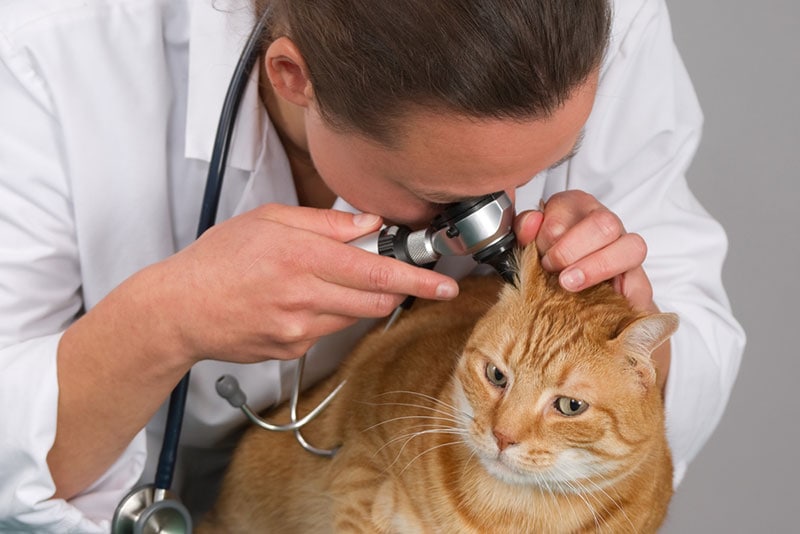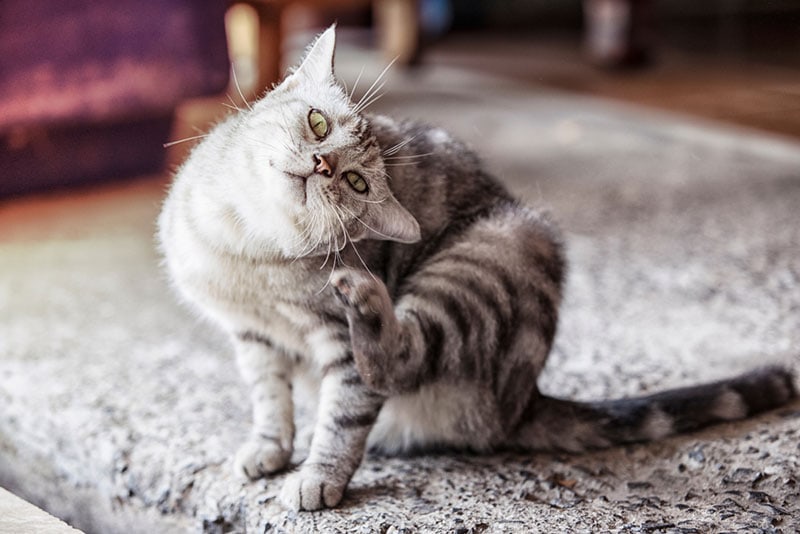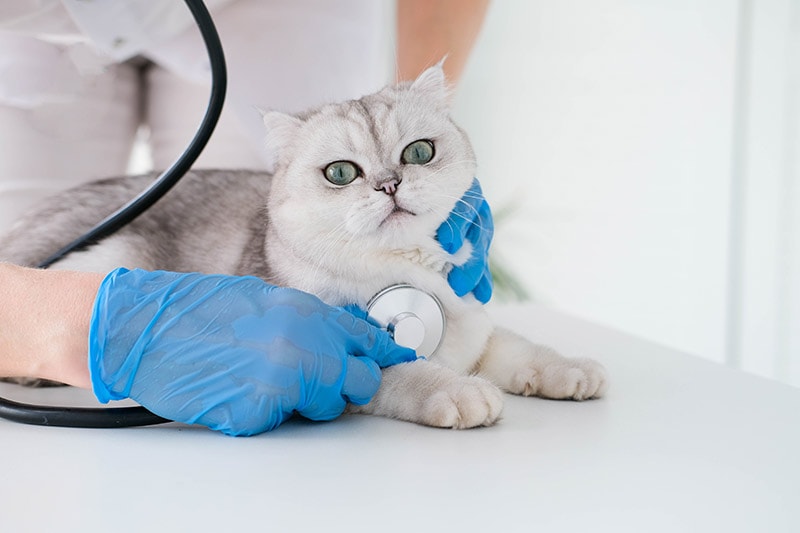Ear Polyps in Cats: Causes, Signs & Treatments (Vet Answer)
Updated on

Click to Skip Ahead
Ear polyps, or nasopharyngeal polyps, are a common cause of recurrent inflammation of the nose and sneezing in cats. Polyps are benign growths of tissue that are not malignant or cancerous. Ear polyps in cats begin growing in a cat’s middle ear compartment, a space between the ear canal and the eustachian tube (tube connecting the ear and the back of the throat).
While they don’t typically spread to other tissues, they can cause issues locally, such as recurrent rhinitis (inflammation of the nose), nasal discharge, sneezing, snoring, difficulty breathing, and otitis (ear inflammation).
What Are Ear Polyps?
Ear polyps, also known as nasopharyngeal polyps, are benign masses that develop from the middle ear chamber in cats. They can grow from the middle ear into the back of the throat where the throat meets the nasal passage (the nasopharyngeal space) or through the eardrum into the ear canal. In some cases, they can grow both directions. While the masses are not cancerous or malignant, they can cause inflammation, irritation, and local problems for a cat.

What Are the Signs of Ear Polyps in Cats?
Signs of a polyp depend on where the polyp is located. Typical signs include changes to a cat’s ability to breathe. Because many polyps grow into the nasopharyngeal space, this can serve as an obstruction to the airways, causing a snoring sound. With nasopharyngeal polyps, many cats also develop sneezing and nasal discharge which can be clear or appear slightly bloody. It is common for cats to develop secondary bacterial infections due to the disruption of the normal flow of air and secretions.
If a polyp grows into the ear canal, a cat may present with signs associated with the ear such as shaking the head, rubbing the ear, pawing at the ear, head tilt, or debris/discharge in the ear. In rare cases where deeper structures are affected, some cats also experience vertigo (loss of balance) or asymmetrical pupil sizes.
Ear polyps tend to occur in young cats, often younger than one year old.
What Are the Causes of Ear Polyps in Cats?
While the exact cause of ear polyps is not known, several theories exist.
Some scientists have proposed there to be a link between infections and the polyps while others believe that chronic inflammation stimulates the tissue to grow.
Still, other scientists have proposed the tissue is a remnant from fetal development that did not fully regress as it should have.

How Do I Care for a Cat With an Ear Polyp?
If you suspect your cat may have a polyp in its ear or nasopharynx, it is important to have your cat properly evaluated by a veterinarian. Depending on your cat’s complaints, the evaluation may require sedation to thoroughly examine the cat’s physical anatomy for any growths or lesions.
Once the polyp is identified and diagnosed, the most important aspect of caring for your cat with a polyp is ensuring they receive veterinary care for the condition. This treatment can include surgical removal (standard traction removal vs. bulla osteotomy) as well as medications to support recovery and reduce complaints.
Frequently Asked Questions (FAQs)
How are ear polyps diagnosed?
For a veterinarian, it can be very easy to diagnose some polyps, for example, via a thorough examination of the deep canal of the ear. While in other cases, a polyp can be very difficult to identify and diagnose.
Your veterinarian may suspect a polyp if there are recurrent symptoms associated with the nose or ear. Some polyps are big enough to be visually identified via an otoscope or via a thorough examination of the back of the throat. Most cats require sedation for a thorough examination, especially if a deep inspection of the nasopharynx is necessary. In some cases, imaging diagnostics, such as radiographs, video endoscopy, or a CT scan must be performed.

How are ear polyps treated?
The typical treatment for a polyp is to remove as much of the growth as possible. In many cases, it may be impossible to completely remove the entire polyp; however, it is often possible to remove most of it. When most of a polyp is removed, many of the main clinical signs and complaints (like trouble breathing, chronic inflammation of the nose or ear, and head shaking) do improve.
If your veterinarian finds a polyp, it can be removed easily through gentle traction using forceps. The most common type of surgery is removal via traction with an instrument. This fairly simple surgery is only possible if your veterinarian can visually identify and physically reach the polyp with the forceps instrument.
If the polyp is located deep within the inner ear structures, it is necessary for some cats to undergo a more intensive surgery called a bulla osteotomy. This special surgery creates an opening into the middle ear compartment through an incision into the rounded part of the skull known as the tympanic bulla. Because of the more precise surgical approach, this technique allows the surgeon to reach more of the polyp so that regrowth is rare. The bulla osteotomy is the most effective treatment option for preventing recurrence.
However, it is a serious procedure with possible complications. In many cases, cats undergo the typical polyp removal procedure and go on to live fairly normal lives. In cases where the polyps are recurring or causing quite severe signs, it can be beneficial to pursue advanced surgical treatment, ideally with a veterinarian specialized in surgery.
Aside from surgical removal, some cats experience some relief from clinical signs of the polyps when given steroids with the aim of reducing inflammation.
Conclusion
Ear polyps are benign growths of tissue found either in the ear structures or nasopharyngeal spaces in the head of young cats. The cause of these polyps is not well understood but theories exist that either chronic infection or inflammation cause the tissue to grow. Once identified, many polyps can be removed (or at least be reduced in size) through gentle traction with a surgical instrument while a cat is under anesthesia. Polyps can recur. In recurring or severe cases, some cats can benefit from a more advanced surgery called bulla osteotomy.
Featured Image Credit: De Jongh Photography, Shutterstock











